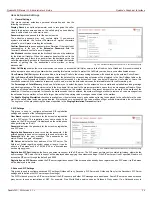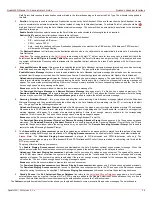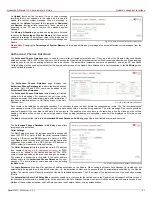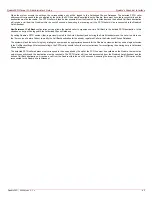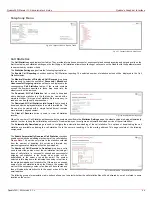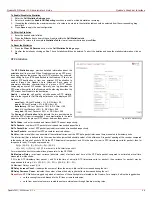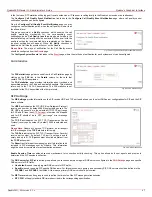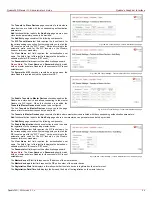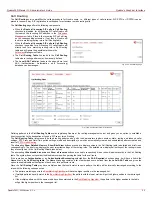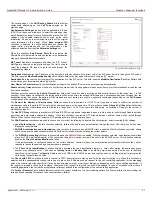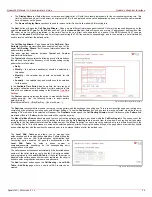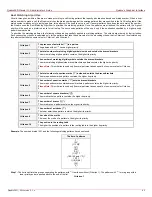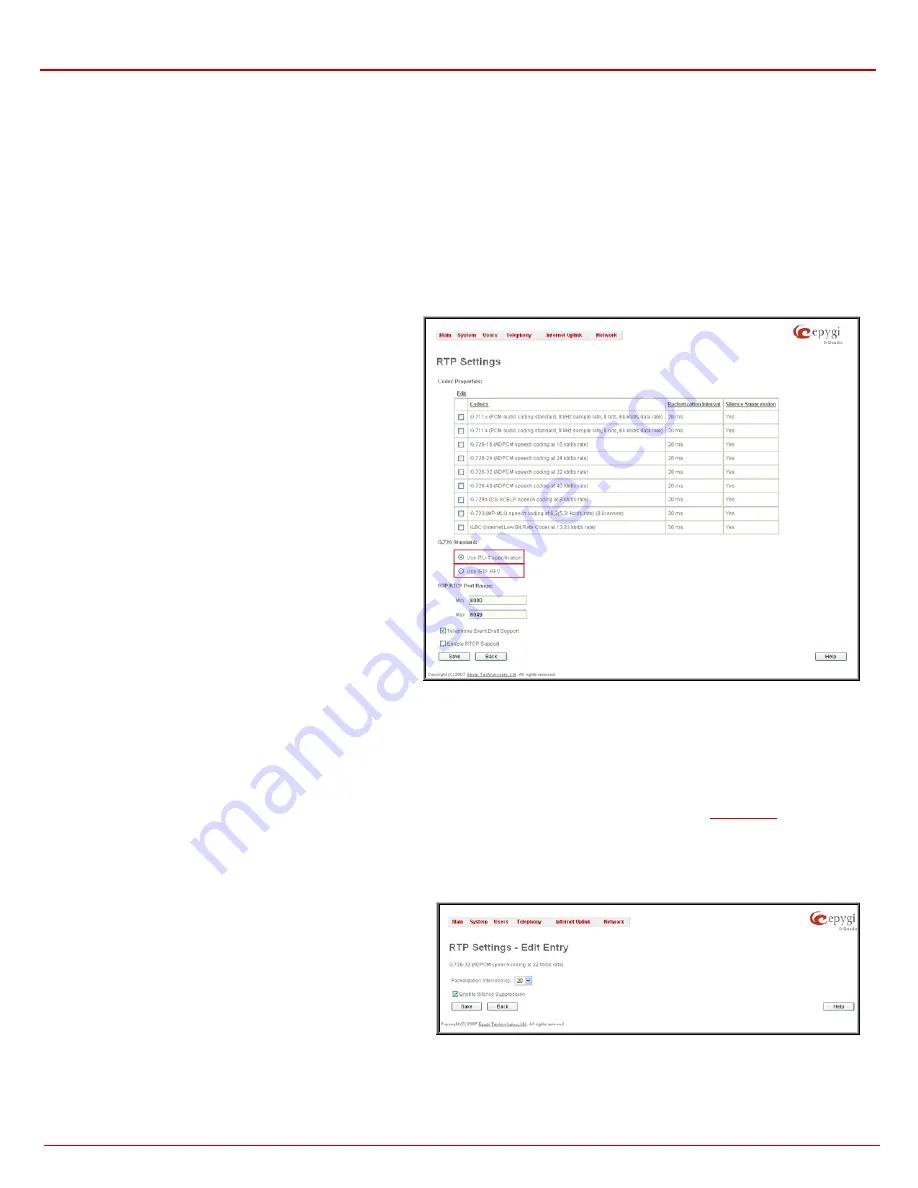
QuadroFXO Manual II: Administrator's Guide
Quadro's Graphical Interface
QuadroFXO; SW Version 5.1.x
48
•
High availability will apply SIP timers to shorten the call establishment, registration confirmation and registration failure procedures. This
selection provides more firmness to the SIP connection but increases the network traffic on the Quadro.
•
Custom allows manually defining the Registration Timeout, Registration Failure Timeout, Transaction Duration and Session refresh
timeout SIP timers (in seconds).
RTP Settings
The RTP Settings page allows the administrator to configure the codec’s packet size and silence suppression for each voice codec, to select the
G726 codec standard, to define RTP/RTCP port ranges, etc. All parameters listed on this page may be modified and submitted.
The Codec Properties table lists all codecs with the corresponding packetization interval and information about silence suppression.
Edit opens the Edit RTP Settings page where the codec settings can be modified. To use Edit, only one codec may be selected at a time,
otherwise the “One record should be selected” error message appears.
The Packetization Interval is the time interval between two
RTP packets of the same stream. If the interval is increased, the
overhead is decreased but the voice quality may deteriorate as
a result. If the interval is decreased, the network load is
increased and the delay is reduced.
Silence Suppression disables RTP packet transmission in
case of no voice activity. This feature helps to avoid extra traffic
if the RTP stream contains no voice activity. It is activated after
two seconds of silence and restarted immediately if any audio
appears.
The G.726 Standard radio buttons are used to select between
packaging the G.726 codewords into octets. If you experience
problems with the G.726 voice quality when one of these
packaging is selected, try a different one.
•
If Use ITU_T specification is selected, the ITU I.366.2
(“AAL2 type 2 service specific convergence sublayer for
narrow-band services”) type packaging of codewords is
used, where packing code words into octets is starting from
the most significant rather than the least significant digit in
the octet.
•
If Use
IETF RFC is selected, the IETF RFC (“RTP Profile
for Audio and Video Conferences with Minimal Control”)
type packaging of codewords is used, where packing code
words is starting from the least significant position in the
octet.
Fig. II-85: RTP Settings page
RTP/RTCP Port Range for FXS Lines:
•
Min - minimal port has to be higher than 1024 and lower than the maximal port range. Only even numbers are allowed.
•
Max - maximal port has to be lower than 65536 and higher than the minimal port range. Only odd numbers are allowed.
Since the specified maximum port has to be higher than the minimum port, the error message “Min port number should be less than max port
number” will appear if this condition is not met.
The port range must consist of digits only, otherwise the error “Incorrect Port Range: only Integer
values allowed” will appear. The difference between Max and Min RTP ports should be 100 ports or less (according to the system’s capabilities)
otherwise the corresponding warning appears. RTP/RTCP Port ranges cannot include the defined SIP UDP ports (see
) otherwise an
error message will appear.
Telephone Event Draft Support enables telephony events transmission according to the draft-ietf-avt-rfc2833bis-04. The checkbox needs to be
toggled if the SIP destination party phone or IVR has problems recognizing DTMFs generated by the Quadro.
Enable RTCP Support enables Real Time Control Protocol support and allows for the RTCP packets transmission. RTCP protocol is used for
monitoring the RTP streams and changing RTP characteristics depending on Network conditions.
The RTP Settings – Edit Entry page offers a drop down list and a
checkbox.
Packetization Interval contains possible values (in milliseconds)
to be configured for the selected codec.
The Enable Silence Suppression checkbox selection enables
voice activity detection for the selected codec.
Fig. II-86: RTP Settings - Edit Entry

